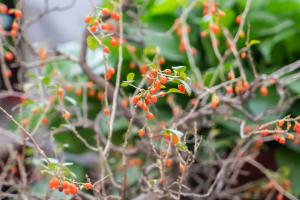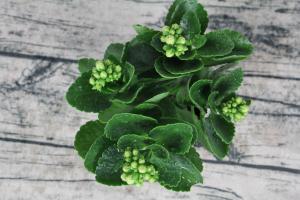Introduction
Poison ivy is a common plant found in North America that can cause a painful and itchy rash. But how do you know what this plant looks like? In this article, we will explore the appearance and characteristics of poison ivy plants.
Physical Description
Poison ivy plants have three pointed leaves that grow from a central stem. The leaves are glossy and range in color from light green to a reddish hue in the fall. They are typically around 2-5 inches in length, and the edges are often irregular or lobed. Poison ivy can also grow as a vine, which can reach 30-50 feet in length. The plant produces small white or green flowers in the spring, followed by small, whitish berries in the fall.
Identifying Features
The key identifying feature of poison ivy is its three-leaf arrangement. However, not all three-leaf plants are poisonous, so it is important to look for other characteristics as well. The leaves of poison ivy plants are often slightly shiny and have a smooth texture. The veins in the leaves are difficult to see, and the stems of the leaves are usually red. The plant also has small hair-like roots along its stem, which help it attach to trees or other surfaces.
Range and Habitat
Poison ivy is found throughout North America, from the southern Quebec and Ontario to Mexico. The plant is typically found in wooded areas, fields, and along roadsides. It prefers shade and moist soil, but can also grow in dry areas. Poison ivy is also commonly found in landscaped areas, like parks and gardens, as it can grow in a variety of soil types and conditions.
Prevention
The best way to avoid getting a rash from poison ivy is to not come into contact with the plant. If you are going to be in an area where poison ivy is present, wear long sleeves and pants, and gloves to protect your skin. Be sure to wash your hands and any exposed skin thoroughly with soap and water after being outside. If you do come into contact with poison ivy, wash the affected area immediately with soap and water to remove any oils from the plant.
Treatment
If you do develop a rash from poison ivy, there are a few things you can do to help alleviate the symptoms. First, avoid scratching the affected area, as this can cause the rash to spread. You can apply calamine lotion, hydrocortisone cream, or a cool compress to the affected area to help soothe the skin. In more severe cases, your doctor may prescribe oral steroids or other medication to help treat the rash.
Conclusion
Knowing what poison ivy looks like is an important part of avoiding the painful and itchy rash that it can cause. Remember to stay alert for the distinguishing features of the plant, and take any necessary precautions when going outside. If you do come into contact with poison ivy, take quick action to remove the oils from your skin and seek treatment for any resulting rash.

 how many times do yo...
how many times do yo... how many planted tre...
how many planted tre... how many pine trees ...
how many pine trees ... how many pecan trees...
how many pecan trees... how many plants comp...
how many plants comp... how many plants can ...
how many plants can ... how many plants and ...
how many plants and ... how many pepper plan...
how many pepper plan...





























